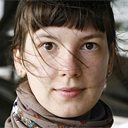How I tried and failed to flip Yandex.Market PDP interface
This is a story of a small but very pity failure.
It was autumn 2015 when I joined Yandex.Market, the biggest Russian e-commerce, as the head of design team. From the very beginning I faced many challenges including diving into new field of internet shopping. I spent many evenings surfing online shops and studying their approaches and interfaces. I filed solutions that seemed to be successful and dared to try them on the product I was responsible for.
Very soon I came across a curious interface pattern in product description page layout. Most online shops placed the photo of the product in the left part of the page and the description and call to action button in the right. I wanted to find out why.
The only explanation I could think of was the reading pattern. We read and accept information from left to right. I assumed that a person wants to study the product first and then make a decision whether to buy it or not basing on the information received.
The Yandex.Market product description page (I’m going to call it PDP further) layout was completely different. The photo of the product was placed in the right part of the page and the description and call to action button were in the left. Thus the perception pattern was ruined.
In order to fix it I suggested to conduct a quick experiment and flip the PDP layout vertically.
I came up with an interface solution in no time. Engineers coded it and started the experiment on a small part of our users. We supposed to measure success with the CTR of call to action button. The experiment showed the 1% growth of this metric. This seemed to be an obvious evidence for the change. However it was not enough.
The designer, who worked on this page previously, created its layout trying to keep it unique. Taking into consideration huge popularity of Yandex.Market in Russia this approach worked well for brand recognition. However, interface contribution to brand recognition measurement is complicated and takes long time to make. It is a long-term measurement and it’s difficult to compare it to some short-term profit that could be achieved by interface change. Despite all this the quantitative evidence received through A/B test was not convincing enough to base a decision of interface change on. So we left it as it was.
What I learned from this story
Don’t rely on competitors experience
Competitor’s experience is definitely worth studying. Sometimes it is worth partly borrowing from. At the same time it is important to understand the problem the competitor was solving and how this problem differs from the one my own product has.
Clarify the problem and make sure it is real
If I had a second chance I would conduct one more research for two reasons:
- Clarify the problem
- Make sure the problem is real
Now I can think of two possible problems concerning the layout.
The first problem. The call to action button is placed in a blind area and is invisible. This hypothesis could be proved via eye tracker. I would show people two layouts and check how an eye moves in both variants. I would also check what areas are the warmest.
The second problem. People can’t make a fully conscious decision about the purchase. A user reads a description and then he sees a call to action button. But before examining an image or several he is still not ready to make a decision about purchase. In order to check this hypothesis I would conduct an interview, show respondents both variants of design and ask them about their motivation to click on different parts of the interface.
Thus I would make sure people really face difficulty using the interface and what exactly difficulty it is.
Agree on the metrics growth expectations
Our experiment showed 1% growth of call to action button CTR. Is it enough? This question is difficult to answer unless the team agreed on the metric expectations before the experiment.
Conclusion
At the moment there was not enough evidence to make a decision to ship the new layout. This is why the team decided to follow the bullet proof approach: it works so don’t change it. I’m sure the more thoughtful use of competitors experience and more careful proof of all hypotheses would help to make a decision that really solves peoples problem.
Two years later Yandex.Market team finally redesigned PDP layout and moved product description and call to action button to the right. I assume they took my experiment into account and this change solved real people’s problem.
